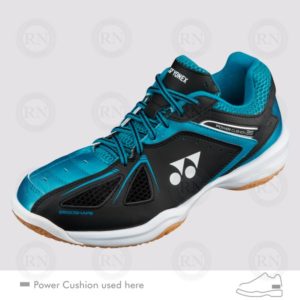
Tennis players, squash players and badminton players in this part of the world know that our store is THE place to come for court shoes. They know that we carry a large selection in-store, that we offer more than 200 additional models online and that we have expert staff who can help them find the right shoe for the job.
Pickleball players are beginning to figure this out too. Although, we have to admit that pickleball players are often more difficult to please than other racquet sports players when it comes to court shoes.
Find the perfect shoe. Try our famous SHOE SELECTOR.
Part of this is due to the fact that many pickleball players are relatively new athletes. While most of our tennis, squash and badminton clients are familiar with the ins and outs of the court shoe category, many pickleball players are relative newcomers. So there are a lot of things they don’t understand.
For example, most experienced racquet sports players understand that brands like Asics ™ and Yonex ™ make court shoes at three different price points: expensive, moderate and cheap. Their most expensive shoes have the most technology, are the most comfortable, last the longest and come in the most attractive colours and styles. Meanwhile their cheapest shoes have the least technology, are the least comfortable, are the least durable and tend to come in the least attractive colours: typically black or white.
While tennis, squash and badminton players seem to understand this and accept it as a fact of life, pickleball players are often annoyed. Many seem to expect that low-priced shoes will be just as good as expensive shoes and will come in equally attractive styles and colours.
Have you ever been fitted by a court shoe expert? Stop by the store. We are open 7 days a week.
Our advice generally — to all players, not just pickleball players — is to focus on the quality of the shoe rather than its price or its aesthetics. Our philosophy is simple; athletic shoes are about function. They are not about fashion.
So which shoes are best for pickleball players? If you are playing in a gym on hardwood floors, you want a sole with lots of natural, organic rubber. If you are playing outdoors on a hard court, you may want synthetic rubber — unless you have tender feet, in which case organic rubber is still the best bet.
If you are playing both indoors on hardwood floors and outdoors on hard courts (now pay attention pickleball players because this is important), you most definitely want two completely separate pairs of shoes. The pair you use on the hardwood needs to be saved for hardwood only. Wearing them outside will ruin them for use on hardwood. Meanwhile, the pair you use outside should never, ever, ever, ever be used indoors on hardwood A) because they will ruin the hardwood and B) because they will not offer sufficient traction on hardwood.
Believe me. We’re not telling you this because we want to sell you two pairs of shoes, we are simply giving you the most important facts. Do whatever you like. Our advice remains the same. Pickleball is an excellent sport. Everybody here at Racquet Network plays it. We all enjoy the game and we love to share our enthusiasm for it. The last thing we want to do is give pickleball players bad advice.
Toenails turning black? FIND OUT WHY
Court shoes at the low end of the price spectrum are designed to look like good court shoes in the same way that a child’s toy is designed to look like a real racing car. While it might look like the real thing, nobody expects to win a race with a toy car.
Court shoes at the high end of the price range, on the other hand, are designed for athletes who want the best combination of performance, comfort, safety and style. Does this mean that high end court shoes are exclusively for elite level athletes? No it doesn’t.
Athletic performance may not be as important for an average pickleball player, but any player who wants to minimize discomfort both during and after playing should be considering investing in high end shoes. So should any player who wants to minimize the risk of injury. This is especially important for older athletes who are more easily injured and who take longer to recover from injuries than younger athletes.
Style may be the least important reason for shelling out top dollar for a good pair of court shoes, but that is really beside the point. Once you get up into the higher price ranges, the more attractive styles and colours are just a bonus. It’s just the cherry on top of a sundae made out of performance, comfort and safety. Since you are paying for the sundae, you may as well enjoy the cherry.
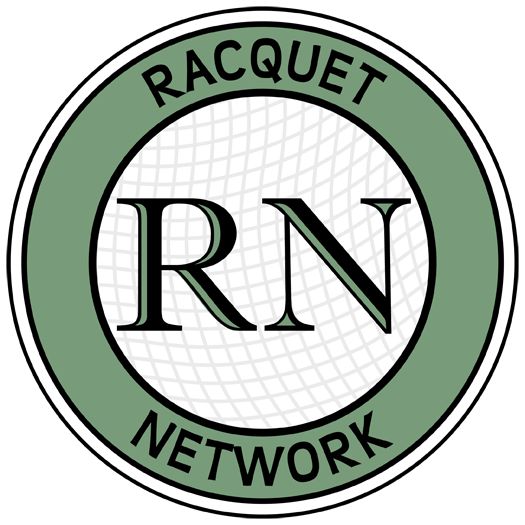
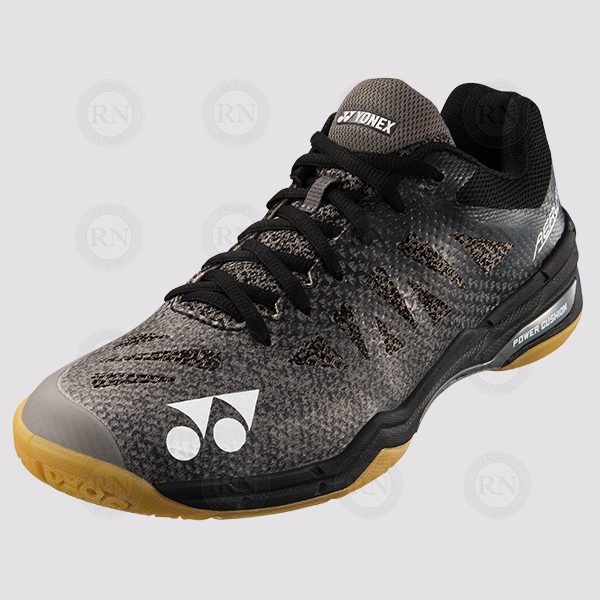
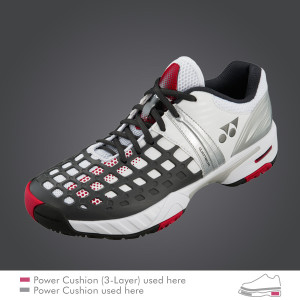 Yesterday, we had a customer come into our southwest Calgary store to buy a pair of shoes. He wanted to use them for tennis, volleyball and dodgeball. He only wanted to buy one pair of shoes.
Yesterday, we had a customer come into our southwest Calgary store to buy a pair of shoes. He wanted to use them for tennis, volleyball and dodgeball. He only wanted to buy one pair of shoes.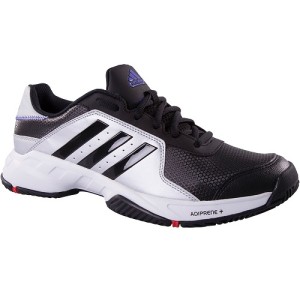 Quite simply, all we can so is offer information on the pros and cons. We cannot, in this case, make a recommendation. Carbon rubber will stand up well on acrylic, but it may be dangerously slippery on hardwood. Natural organic rubber provides excellent traction on hardwood, but will quickly be ground down by acrylic. Synthetic rubber offers the best all around compromise, but offers poor traction on hardwood and poor durability on acrylic.
Quite simply, all we can so is offer information on the pros and cons. We cannot, in this case, make a recommendation. Carbon rubber will stand up well on acrylic, but it may be dangerously slippery on hardwood. Natural organic rubber provides excellent traction on hardwood, but will quickly be ground down by acrylic. Synthetic rubber offers the best all around compromise, but offers poor traction on hardwood and poor durability on acrylic.